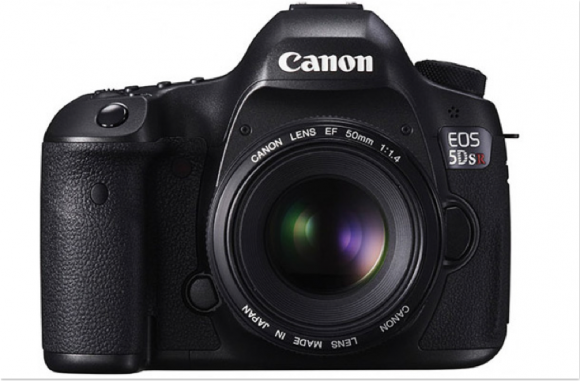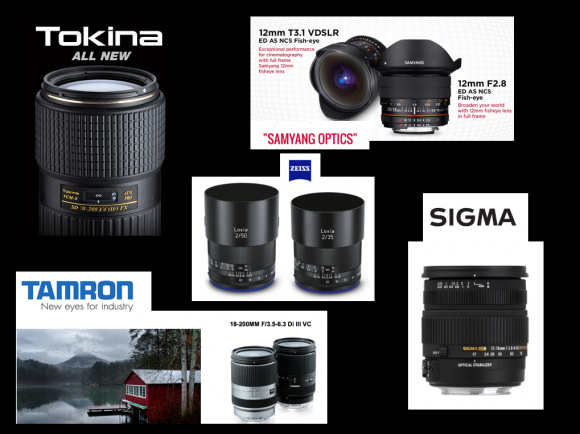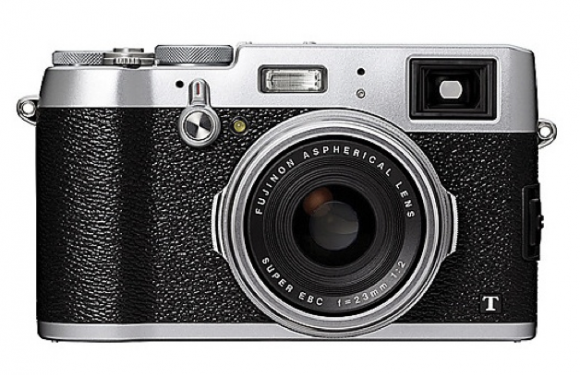Category : The Learning Center
If you already own the Fuji 10-24 f 4 XF lens, or the Fuji 16-55 f 2.8 XF lens why would you invest in the new Fuji 16mm f 1.4 lens??!! I just got a new production copy of the 16mm f 1.4 XF lens and I was wondering the same thing!!! So let’s give it a try in the field!
First let me dispel what many people believe about extreme wide angle lenses, that they are designed so we, as photographers, can view, and thus, get more stuff in the image. While true, that’s not the most effective way to use a wide angle lens though! A very effective way to use a wide angle lens is to move in close to your main subject and make it the sharpest thing in the image, and then allow the background to either be equally sharp, by stopping down to a very small aperture setting like f 11 – 16 or 22, or to make the background “very” out of focus, or by opening the lens to it’s largest aperture setting. There in lies the value of a f 1.4 wide angle lens, the depth-of-field is extremely shallow when shot wide open ( f 1.4 ) thus making the background a very dreamy out of focus!!! What makes this lens even more special is that it focuses down to a minimum distance of just 15cm!!! That makes it all the more effective in showing strong, sharp, subjects with wonderful Bokeh in the background!!!
An important part of the photographer’s bag of tricks is to use shallow depth-of -field effectively, to focus the viewers eye on a main subject, letting the rest of the image go out of focus. I went over to my neighbor’s garden and then down to a used car lot that had a very interesting 1949 Chevy wrecker I had been wanting to photograph. All images were shot at f 1.4 to show the effectiveness of a shallow area of sharp focus.
So how does the news Fuji 16mm f 1.4 XF lens do? I will let you judge but at 100% on my computer screen, the in focus areas are Razor sharp. The color quality of the new lens is outstanding and the build quality is rock solid. The 16mm also has a clutch
focusing mechanism that allows smoother and deadly accurate manual focusing, however, the autofocus is among the fastest and most accurate yet!
O.K. I already own the 10-24 and the 16-55, but this one is staying in my camera locker, for very special assignments that requires it’s lovely abilities!!! Besides the 24mm focal length has always been one of my favorite, going back to my photojournalism days!
Well done, Fuji another Five Star Winner!
Here are a few examples of what I described above, all images shot at f 1.4.
There is a serious problem with the newest Fuji lenses! They just keep getting better and better! The problem????? It’s impossible not to acquire each and everyone!!!! But I love it, thanks Fuji for making such great glass1
Blessings,
the pilgrim
This post has 8 comments. Click here to read them
This entry was posted on Saturday, May 9th, 2015 at 3:58 pm
You can follow any responses to this entry through the RSS 2.0 feed.
Canon has announced that they will have two new camera models released by June, the 5Ds and 5Dr both 50 mega pixel full frame censored cameras! Equally shocking the price, The 5DS is $3,699 and the 5DR is $3,899. The difference? The R model has the low pass filter cancelled for more sharpness. * I bet Nikon has something similar waiting in the wings, (No I do not know anything, I have no inside information, but this is how the industry works!)
Here’s a list of the specs (from Canon) * Thanks to Scott Kelby for this info.:
> Newly designed 50.6 Megapixel full-frame CMOS helps deliver ultra-high resolution images for large-scale printing and extensive, creative cropping, while Dual DIGIC 6 Image Processors enable spectacular image quality and processing speed.
> EOS Scene Detection System features a 150,000-pixel RGB+IR Metering Sensor for excellent precision.
> 61-Point High Density Reticular AF including up to 41 cross-type AF points and EOS iTR allows for high precision autofocus.
> Advanced mirror control mechanism and new user-selectable shutter release time lag helps suppress camera vibration for reducing image shake.
> Anti-flicker helps compensate for flickering light sources and provides consistent exposure and color during continuous shooting.
> Built-in intervalometer and bulb timer helps deliver expanded creativity.
> 1.3x and 1.6x crop shooting adds superb flexibility, while still delivering high resolution images required for demanding applications.
> Intelligent Viewfinder II with approximately 100% viewfinder coverage.
> Full HD 30p movie capability and Time Lapse Movie function, which takes still photographs at set intervals and combines them into a Full HD movie file.
> High-speed continuous shooting up to 5.0 fps allows you to capture fast action.
> 3.2-inch ClearView II LCD monitor, 170° viewing angle, 1,040,000-dot VGA, reflection resistance with multi coating and high-transparency materials for bright and clear viewing.
> Customizable Quick Control Screen allows you to quickly change frequently used camera settings and functions.
> Support for USB 3.0.
So here is my take. Who needs 50 mega pixels, or 36 mega pixels, the former reigning champ before today? I know what you think I’m going to say! Nobody, actually no, that is not true. I personally t think that the number of photographers that actually “need” this kind of resolution is minuscule, but some folks can take full advantage of it. Commercial, landscape, and product photographers that are going print print extremely large, say 12 X 18 feet, and larger can certainly take advantage of that kind of resolution. I imagine that it will mostly be bought by people that want to shoot something and then look at it at 400% and then feel the rush!!! I have high regard for Canon gear, I had to compete with them when I was at Nikon and I’m sure they took the time to get this right!
I think the industry is furthered by these exercises in stretching the limits. Research brings progress and progress brings us better cameras. Is this new 5DS or 5DR good for someone that really doesn’t need that kind of resolution? No. It is going to tax your computer to the max, requiring massive storage, (if you shoot very much), and if you think getting sharp result from a D810 is tough, wait till you try to eliminate camera movement with this bad boy! It will be even harder to tame. I can’t imagine and holding it at less than 1/2,000 of a second. I could be wrong, but my experience with the Nikon D800 series says this is going to bring a whole new lesson on discipline to it’s new owners.
Am I even in the least tempted? Not one bit. But then the new D810 which I know to be a wonderful camera didn’t tempt me either.
For me, at my age, and shooting what I shoot, the Fuji X-T1 at 16 megapixel is a high mega pixel camera. Some the best images I made in my life were made with a D3 or D700, (same sensor), clocking in at 12 mega pixels!
Rod Planck said it best, “Technique beats equipment, every time!”
But then, if you get one, let me know what you think!!!!
Blessings,
the pilgrim
Now available at the bookstore:
This post has 6 comments. Click here to read them
This entry was posted on Friday, February 6th, 2015 at 2:41 pm
You can follow any responses to this entry through the RSS 2.0 feed.
There was a day that when asked about third party lenses, I would have simply said, “avoid them”! That day has passed. I still believe that in most cases you should buy the lenses made for your camera, by the camera manufacturer. There are times now when you might should consider a third party lens.
(1) If your camera maker does not offer a particular focal length or speed, you need.
(2) If the lens you need from your manufacturer is simply too expensive for your budget.
(3) If an independent lens maker makes a particular product that you need and your camera maker does not make the same product!
What about quality? That is a good questions and it is not easy to answer. First know that all lens makers even the big boys like Canon and Nikon make several levels of lenses in terms of quality. If your camera maker offers two 70-300 lenses and the price difference is very significant, you can bet the build quality and optical quality probably is too! When your grandfather said, “You get what you pay for!” He knew what he was talking about! Twenty years ago a independent lens was rarely as good as the manufacturers original lenses, but the third party folks have really gotten their act together and now produce some very fine optics. The mechanical quality is all over the board, but honestly it is too, even with the major manufacturers.
How about the premium brands like Zeiss? Zeiss lenses are expensive, very expensive, and if you can afford them, probably worth it. Zeiss has a very long history of making extremely good glass, well designed and set in premium quality constructed barrels and mounts. Some Zeiss lenses are clearly superior, others pretty close to the quality of the other best lenses in their focal length.
How good is the consistency from lens to lens within a manufacturers line? Let’s say you buy a 70-200 f 2.8 zoom lens from any major manufacturer or third party company. If there are six lenses new on the shelf at the dealer, does it matter which one you buy? You bet! All manufacturers will have small differences from lens to lens in the manufacturing process. The better companies have tighter quality control which makes the performance more consistent, but does not eliminate the fact that an occasional lemon slips through. Does your lens maker pull one out of every 3 from the line to test, or 1 of every 10, or maybe one of every one hundred!!!!!
So what can you do to make sure you get a good value for your dollar spent on lenses? I have several suggestions that will at least put the odds in your favor!
A. Be your own quality control department. Deal with a dealer that has a return privilege. When you buy a lens make a thorough test the day you buy it. Have some comparison shots of the same test subject that you’ve made with a lens you have high regard for, and compare them. I have a old building with a brick wall in my town, and at the right time of day when the bricks are cross lit, I can test a lens and see what the sharpness is, corner to corner. I have a couple of other color targets I can shoot. Since I’ve done this with hundreds of lenses, I can tell right away how a lens stacks up. If it doesn’t, it goes back in the box and back to the dealer and I try another. * Now honestly in 45 years of being a serious photographer I’ve had very few lenses that were lemons, but I have had a few!! A great relationship with your dealer is your best insurance against getting stuck with a lens that will be a disappointment.
B. Check the lens for build quality. This is hard without taking a lens apart but ask a camera repairmen what they think of the quality of certain lenses. Trust me they’ve taken enough apart to know what’s inside! You can also compare the weight and smoothness of opposing lenses right in the store, and if you trust your sales person, (and why would you be shopping with him if you didn’t!) ask his advice. A good retail sales person that will shoot you straight is incalculable. You can also ask friends who have purchased lenses your interested in about their experience! Lastly you can read test reports, but be careful, some publications accept advertising from the same companies whose products they review! This does not always create a conflict, but it’s wise to be careful!
C. Be realistic about your needs. Are you constantly traveling and shooting around the world in harsh environments using your gear everyday? Or do you shoot a couple of times a month and on holidays? You don’t need the highest end, seriously built, lenses for occasional use.
D. Talk to friends, associates, and people you meet about their lenses. Ask them if they have been happy with them, if they seem to be holding up. Visceral information is valuable!
Lenses are one of the very most important parts of the imaging system. Do your homework, check around and test your selections and then go out and use them to make great images!!
Blessings,
the pilgrim
This post has 4 comments. Click here to read them
This entry was posted on Friday, October 10th, 2014 at 3:06 pm
You can follow any responses to this entry through the RSS 2.0 feed.
 The subtle beauty of Kodachrome film.
The subtle beauty of Kodachrome film.
With apologies to the late, great Lewis Grizzard, (humorist and columnist for the Atlanta Journal & Constitution and my brother in arms, born in the same year I was 1946!…..and we lost him all too soon!), who wrote a book by that title, today’s post requires a trip back to his era! In the 70’s and 80’s when Lewis wrote most of his dozens of great books, (Kathy Sue Loudermilk, I Love You – Elvis is Dead and I Don’t Feel So Good Myself – They Tore My Heart Out and Stomped that Sucker To Death – Shoot Low Boys, Their Riding Shetland Ponies – Chilli Dogs Always Bark At Night and I Haven’t Understood Anything Since 1962!!) Do yourself a favor and buy a book or two, you’ll end up buying them all! If you live north of the Mason Dixon Line, don’t bother, they won’t be funny to you!!! O.K. enough of my love affair with Lewis and his writing, what on earth is this blog entry about?????
This morning by good buddy Zak Arias posted a report on the new Fuji X100T, and update to the current X100s camera. As always, an excellent report from Zak, http://dedpxl.com/fuji-x100t-first-look/ One of the new features in the camera is a film simulation called Classic Chrome. Now this where the story get interesting! If you go back and visit the history of film emulsions, you would find that a massive, all powerful company called Eastman Kodak had the film that most professionals loved dearly called Kodachrome. It rained supreme until an upstart little Japanese company called Fujifilm introduced a film called Velvia! Since that day the photography world has never been the same. If you had been a photographer in those days you would remember what an intense war was waged between these two companies. I’m not going to declare a winner, but Kodak, for all practical purposes, no longer exists, certainly not as it did back then. Now three decades later Fuji introduces a camera that allows the photographer to shoot in the color palette of a film they helped become extinct!
Now, I’m not being critical, I actually loved Kodachrome and I miss it, and look forward to shooting some images with it’s lovely color palette! I think it’s just an interesting “historical” turn of events!
So the question that always comes when new products are released by Fuji, “Will you buy it?” Not sure. I love the current X100s and I’m not sure I need the upgrades, though it is very tempting and I would love to have the X100 series in Black, and the “T” is available in black, so who knows, maybe a sum of money will drop out of the sky! What I do want is the new lens that was finally “officially” announced as well. The new 50-140 f 2.8 (equivalent to 80-210 focal length with the APS-C sensor). the new lens has a tripod collar, takes 72mm filters, and is “claimed” to be one of the sharpest lens of this focal length ever. It will sell for $1,600. which is about right compared to Nikon and Canon’s similar lenses for their full frame cameras. The 55-200 is extremely sharp and is nice and compact so I will keep it too, but a fast medium telephoto zoom was a big hole in the system.
The new lens, based on Fuji’s record on optics , should be spectacular, sure hope so. One of the most important features in internal focus and zooming so the lens does not extend in physical size. Fuji also announced a new 56mm f 1.2 APD, which allows the lens to get even softer bokeh and vignette for portrait photographers!
Exciting times today, some of the best of yesterday, works for me, and as Lewis said, “There’s no such thing as being too Southern.”
Blessings,
the pilgrim
This post has 10 comments. Click here to read them
This entry was posted on Wednesday, September 10th, 2014 at 1:18 pm
You can follow any responses to this entry through the RSS 2.0 feed.














